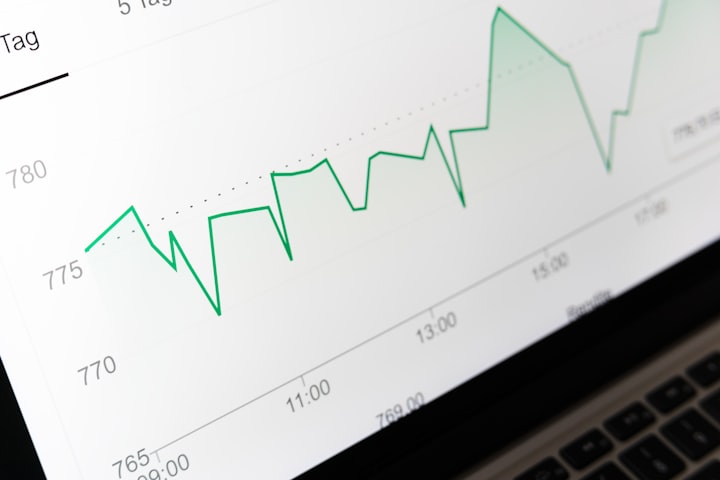Here is Your Financial Portfolio
How to make it and what to include

Introduction
If you're like most people, your financial portfolio is probably a pretty simple collection of assets and debts.
But if you're serious about your finances, it's time to start thinking about how those assets and debts can impact your future goals.
In this post, we'll discuss what makes up a financial portfolio and show you how to create one that best suits your needs—and even helps set aside some money for emergencies!
Recommend Reads: How to make MONEY ON YOUTUBE with no recordings
Your Financial Portfolio: How to Make It and What to Include
A financial portfolio is a list of assets that you own and control. It's also called an investment portfolio, which is the term most people use to describe their financial holdings.
Your goal as you begin to build your own portfolio should be to understand how each asset works in relation to one another—and in relation to your overall financial goals.

As you consider what type of investments would fit into the mix best for your situation, keep these things in mind:
How much risk do I want? If there's any doubt about how much risk or return potential exists with any given asset class (such as stocks), it may be best not include it at all; instead try something safer-feeling like bonds or CDs.
That way if/when things go south financially on one particular investment vehicle but everything else remains stable over time (like stocks), then at least some part of your overall strategy will still be intact regardless!
Keep Calm And Build Your Financial Portfolio This can help keep emotions out while still giving yourself flexibility when making decisions later down line."
What Is a Financial Portfolio?
A financial portfolio is a collection of assets and debts that can be used to track your progress towards goals, like saving for retirement or paying off debt.
It also highlights the success—or lack thereof—of certain investments. Press Tab to write more...
Some people call their portfolios “investments," but this isn't quite right: investments are things like stocks and bonds that earn money by buying low and selling high (or vice versa).
Your personal financial portfolio will include checking accounts, savings accounts, certificates of deposit (CDs), mutual funds and other investments in addition to the houses you own outright or have mortgage on.
If the idea of tracking down all these different kinds of assets makes you nervous about keeping up with everything at once, don't worry! You don't need to do it all yourself—you could use an online tool like Personal Capital or Mint as part of your toolkit instead!
Why Do You Need One?
- It can help you understand your financial situation.
- It can help you set financial goals for yourself and your family.
- It can help you make better financial decisions, like buying a house or saving for retirement.
And if something goes wrong, it's easier to get help because of all the information in one place (and not spread out across many different places).
What Should You Include in Your Financial Portfolio?
Your financial portfolio should include the following:
- Your current assets and debts (i.e., how much money you have in savings, credit cards, etc.)
- Your financial goals (e.g., saving for retirement)
- What you need to get there (i.e., which investments are best suited for your goals)
- How Do You Make a Financial Portfolio?
- How do you make a financial portfolio?
First, create a list of all your financial assets and debts. Next, determine your goals for those assets and debts.
What are the steps that need to be taken in order to reach those goals? Make sure these goals are clear so that you can keep them front-of-mind when making decisions about what types of investments or loans should go into your portfolio.
Once you know where you want to go with this part of your life (and why), put together a plan for how exactly going there will happen—what actions need to be taken by whom at what time in order for those objectives to be met successfully!
Analyze your current assets and debts to determine what you need in order to meet your financial goals.
The first step in developing a financial portfolio is to analyze your current assets and debts, determine your financial goals and identify what you need to get there.
To do this, you'll need to understand how much income you have coming into the household each month (i.e., what's called an "income statement"). You can use this information along with the amount of money invested in stocks or mutual funds as well as other investments like CDs or bonds.
A quick Google search will help you figure out exactly how much of each type of asset makes up your overall net worth—which includes both liquid assets such as cash on hand at all times (checking accounts) plus real estate holdings like homes and businesses that provide steady payments over time but aren't necessarily liquid when needed down-to-earth solutions like short term certificates of deposit (CDs) which may lose value over time due to inflationary pressures rising prices across all markets globally."
Conclusion
Once you have a financial portfolio, it will help you keep track of where your money is going.
You can use this information to make informed decisions about your investments and savings, so that in the future—when you need more money than what's currently available—"you'll know exactly how much to save."
About the Creator
Mathis Raja Official
"Financial enthusiast & affiliate marketer sharing my journey through finance, blogging, & YouTube videos. Helping others make the most of their money & reach financial freedom."






Comments
There are no comments for this story
Be the first to respond and start the conversation.